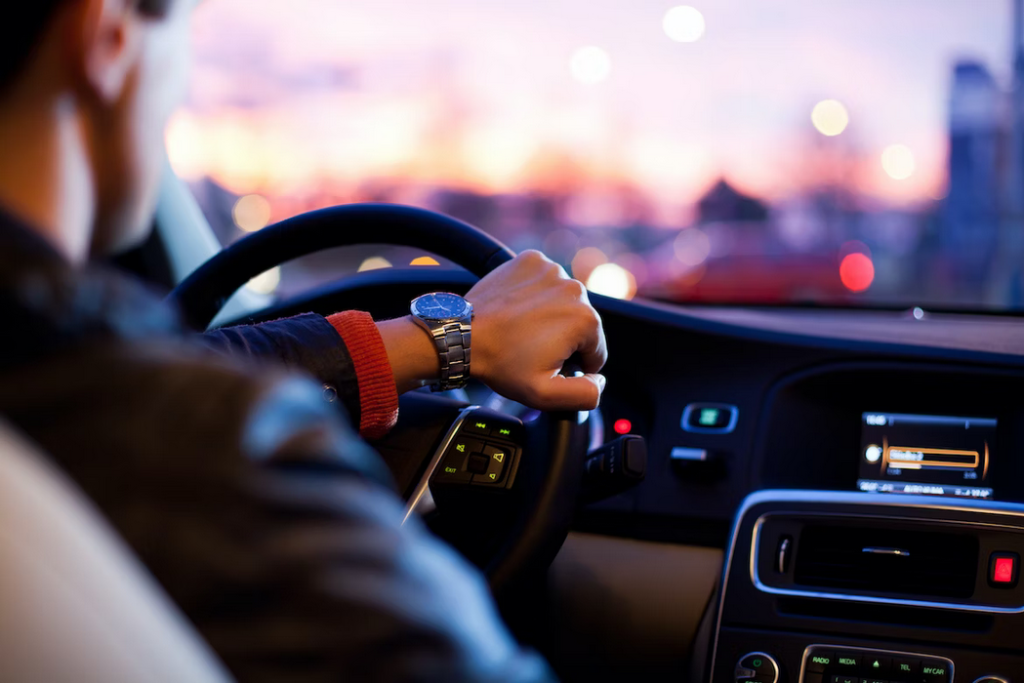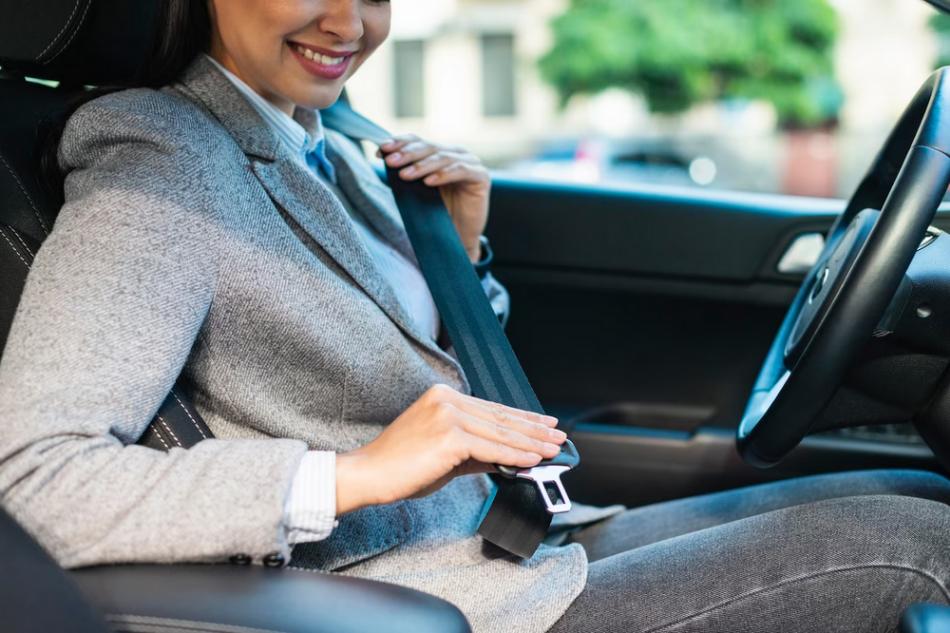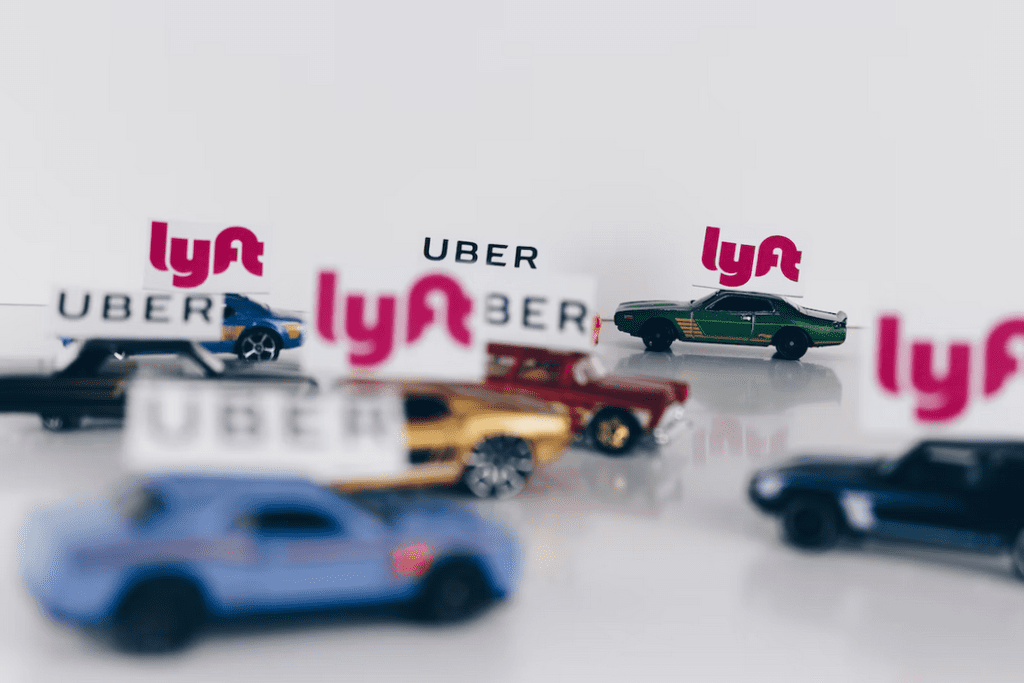Rideshare services such as Uber and Lyft have become increasingly popular in recent years. As a result, the number of accidents involving rideshare vehicles has increased.
This section will explore the types of rideshare accidents, the common injuries suffered by victims of these accidents, and the legal rights of rideshare accident victims. Additionally, information on how to protect oneself in a rideshare accident and how to pursue legal action after an accident will also be provided.
Types of Rideshare Accidents
Rideshare accidents can be broken down into three primary categories:
Single-Vehicle Rideshare Accidents occur when the rideshare vehicle is the only vehicle involved in the collision.
Multi-Vehicle Rideshare Accidents involve two or more rideshare vehicles, as well as other vehicles or objects.
Rideshare Pedestrian Accidents occur when a rideshare vehicle collides with a pedestrian on foot.
Single-Vehicle Rideshare Accidents
Examining single-vehicle incidents and their potential consequences offers a unique insight into the risks of ridesharing.
A single-vehicle accident occurs when a rideshare vehicle collides with another object, such as another vehicle, a pedestrian, a tree, or a guardrail, without any other vehicles involved.
The driver and any passengers in the rideshare vehicle are the only occupants of the vehicle and as such, are more likely to suffer serious injuries in the event of an accident.
Additionally, single-vehicle accidents can be caused by a variety of different factors, such as driver fatigue, poor weather conditions, or distracted driving.
It is important to note that single-vehicle rideshare accidents can be particularly dangerous, even if the other driver involved is not responsible for the accident.
This is because the rideshare driver or passenger may be unable to properly assess or react to the situation, resulting in a higher risk of injury.
Additionally, these types of accidents can be expensive, as property damage and medical bills can mount quickly.
For these reasons, it is essential for rideshare drivers to be aware of the risks of single-vehicle accidents, and to take precautionary measures to reduce the risk of an accident occurring.
Multi-Vehicle Rideshare Accidents
Multi-vehicle rideshare incidents involve two or more vehicles, potentially increasing the severity of consequences for the occupants of the rideshare vehicle.
In these types of accidents, the rideshare vehicle may be involved in an accident with a car, a truck, or even another rideshare vehicle.
As a result, the potential for severe injury is greater, as the occupants of the rideshare vehicle may be impacted by both the size and speed of the other vehicle.
In addition, the occupants of the other vehicle may also suffer more severe injuries due to the size and speed of the rideshare vehicle.
The risk of injury is further amplified when more than two vehicles are involved in a multi-vehicle rideshare accident.
The speed at which the vehicles are travelling and the number of occupants in each vehicle can cause a greater amount of force to be applied to the occupants of each vehicle, leading to more severe injuries.
Furthermore, the risk of property damage is more likely in multi-vehicle rideshare accidents, due to the increased number of vehicles involved.
Rideshare Pedestrian Accidents
When pedestrians are involved in collisions with rideshare vehicles, the potential for serious harm is significantly increased due to the size and speed of the vehicle. The risk of injury is even greater for pedestrians than drivers due to their lack of protection.
Furthermore, the increasing number of rideshare vehicles on the road increases the chance of a pedestrian-rideshare accident. Pedestrian-rideshare accidents can be caused by a variety of factors, such as distracted driving, speeding, and failure to yield the right-of-way.
Furthermore, it is difficult for pedestrians to judge the speed and distance of oncoming rideshare vehicles which can increase the likelihood of an accident. It is important for both pedestrians and rideshare drivers to be aware of their surroundings and to exercise caution in order to prevent pedestrian-rideshare accidents.

Common Rideshare Accident Injuries
Whiplash and Neck Injuries are some of the most common injuries that occur in rideshare accidents. These injuries are caused by the sudden jerking motion of the body due to the impact of the collision and can lead to a range of symptoms including neck pain, headaches, shoulder pain, and dizziness.
Head and Traumatic Brain Injuries are also common in rideshare accidents, and can range in severity from mild to more serious, long-term impairments.
Spinal Cord and Back Injuries can result in varying levels of pain and discomfort and can cause permanent damage and disability if the injury is severe.
Whiplash and Neck Injuries
The incidence of neck and whiplash injuries resulting from multi-vehicle collisions has been well-documented in the literature. Specifically for rideshare accidents, research has shown that occupants of the rideshare vehicle are at risk of experiencing these types of injuries due to the nature of the accident. The impact of the collision is often greater than in other types of vehicle collisions due to the fact that the rideshare vehicle is typically smaller and lighter than other vehicles involved.
Whiplash, the most common type of neck injury, is caused by sudden, forceful movement of the head and neck in a back-and-forth motion. The symptoms of whiplash can include neck pain, stiffness, and soreness, along with headaches, dizziness, and fatigue. In severe cases, whiplash can cause permanent damage to the cervical spine.
It is important to seek medical attention after a rideshare accident to ensure that any neck and whiplash injuries are treated properly and in a timely manner.
Head and Traumatic Brain Injuries
Motor vehicle collisions can lead to a range of head and traumatic brain injuries, with varying degrees of severity. Examples of head and traumatic brain injuries include:
- Concussions
- Skull fractures
- Contusions
- Intracranial hemorrhages
These injuries can be caused by a direct blow to the head, or a sudden stop or acceleration of the vehicle that causes the head to move rapidly, such as whiplash.
Head and traumatic brain injuries can cause lasting physical, cognitive, and emotional impairments. Physical symptoms can include headaches, dizziness, nausea, blurred vision, and slurred speech. Cognitive impairments can include difficulty with memory, thinking, and concentration. Emotional symptoms can include depression, anxiety, and behavioral changes.
Treatment for head and traumatic brain injuries can include medications, physical and occupational therapy, and counseling. It is important for individuals who have been in a ridesharing accident to seek medical attention immediately in order to receive proper diagnosis and treatment.
Spinal Cord and Back Injuries
Spinal cord and back injuries can occur in motor vehicle collisions and range from mild to severe, often resulting in temporary or permanent disability. Individuals who have suffered spinal cord and back injuries in motor vehicle accidents may experience numbness, tingling, weakness, or chronic pain. In more severe cases, individuals may suffer paralysis or be confined to a wheelchair. The effects of a spinal cord or back injury can be devastating and life-changing for individuals and their families.
| Injury | Description | Note | |
| Numbness | Loss of sensation in a certain area of the body, caused by impaired nerve functioning. | ||
| Tingling | A prickly or burning sensation in the skin caused by compressed or damaged nerves. | ||
| Weakness | Reduced strength in part of the body caused by impaired nerve or muscle functioning. | ||
| Paralysis | Loss of muscle function in part of the body caused by damage to the nervous system. | ||
| Chronic Pain | Persistent or recurrent pain that is not caused by a specific known injury or medical condition. | It can last for weeks, months, or even years. |
Potential Causes of Rideshare Accidents
The discussion of potential causes of rideshare accidents should include distracted driving, speeding and reckless driving, and inadequate vehicle maintenance.
Distracted driving is identified as a major factor in accidents and can be caused by drivers using their phones, looking at maps, or talking to passengers.
Speeding and reckless driving often result in more serious consequences due to the lack of control and increased risk of injury.
Inadequate vehicle maintenance can lead to mechanical failures and potentially hazardous situations.
Distracted Driving
Distracted driving is a dangerous behavior that puts the safety of all road users at risk. It is the act of operating a motor vehicle while simultaneously engaging in activities that divert the driver’s attention away from the primary task of driving.
Common examples of this include talking or texting on a cell phone, eating and drinking, talking to passengers, and operating a navigation system. These activities can potentially cause drivers to take their eyes off the road, their hands off the wheel, or their minds off the task of driving.
In the context of rideshares, distracted driving can be particularly risky due to the inherent unpredictability of the job. Rideshare drivers need to be constantly aware of their surroundings in order to anticipate the needs of their passengers, such as sudden turns or exits.
A distracted driver may not be able to make quick decisions or react to potential hazards quickly, increasing the chances of an accident. To help reduce the chances of distracted driving, rideshare companies have implemented policies that require drivers to use hands-free devices or take breaks during long trips.
Speeding and Reckless Driving
Reckless and speeding driving are hazardous behaviors that place the safety of all road users in jeopardy.
Reckless driving includes actions such as failing to obey traffic signals, failing to yield right of way, and illegal passing.
Speeding is driving faster than the posted speed limit or driving too fast for the road conditions.
Both of these dangerous behaviors increase the risk of serious accidents and injuries.
Rideshare drivers are no exception to these dangerous behaviors.
They are often under pressure to get to their destination quickly, which can lead to speeding and other reckless driving behaviors.
Rideshare drivers are also prone to distraction, which can further increase the risk of an accident.
Research has shown that rideshare drivers are more likely to be involved in serious accidents than other drivers due to their reckless and speeding driving behaviors.
As such, it is important for rideshare companies to take steps to reduce the risk of accidents and injuries by educating drivers about the dangers of reckless and speeding driving.

Inadequate Vehicle Maintenance
Having discussed the issue of speeding and reckless driving in rideshare accidents, inadequate vehicle maintenance is another factor that can result in serious injury.
It is the responsibility of the rideshare company to ensure that their vehicles are regularly inspected and maintained to the highest safety standards.
As such, a lack of proper maintenance can lead to dangerous conditions for passengers and drivers alike.
Below are four common types of inadequate vehicle maintenance that can lead to serious injury in a rideshare accident:
- Worn-out brakes
- Faulty steering
- Defective tires
- Improperly maintained airbags
Legal Rights of Rideshare Accident Victims
Compensation for medical expenses, recovering lost wages, and pain and suffering damages are all important considerations for rideshare accident victims.
Medical expenses can include hospital bills, doctor visits, and other related expenses.
Lost wages refer to those wages lost due to the inability of the victim to work due to their injuries.
Pain and suffering damages refer to non-economic expenses such as emotional distress or physical pain caused by the accident.
Compensation for Medical Expenses
Negligent incidents involving transportation services can result in costly medical expenses that must be taken into account. Victims of rideshare accidents may be eligible for compensation for their medical expenses depending on the circumstances of the accident and their own individual situation.
The following bullet point list outlines some of the ways victims of rideshare accidents may be eligible for medical expense compensation:
- Types of Compensation:
- Personal Injury Protection (PIP) insurance
- Health insurance
- Disability insurance
- Social Security Disability Insurance (SSDI)
- Factors Affecting Eligibility:
- Severity of the injury
- Type of insurance coverage
- State where the accident occurred
- Whether the victim was a driver, passenger, or third-party
- Legal Requirements:
- Victims must file a claim within a certain period of time after the incident
- Victims must provide evidence of the medical expenses incurred
- Victims must show that the accident was caused by the negligent behavior of the rideshare company or driver
Recovering Lost Wages
Those affected by a transportation incident may be entitled to lost wages in addition to medical expenses.
Lost wages refer to the income an injured individual would have earned had they not been involved in the accident.
The amount of lost wages an individual is entitled to may depend on the severity of the incident, the length of recovery, and the individual’s ability to work.
An injured individual may be able to recover lost wages by filing a claim with the insurance company of the rideshare company, by filing a lawsuit, or by working out an agreement with the rideshare company.
It is important to keep in mind that the amount of lost wages an individual is entitled to may vary depending on both the state and the industry in which the individual works.
For example, in some states, an individual may be entitled to receive a portion of their lost wages, while in other states, an individual may be entitled to receive their full lost wages.
Additionally, the amount of lost wages an individual is entitled to may be limited depending on the industry in which they work, such as if they are a salaried employee or an independent contractor.
Therefore, it is important to research the laws of the state and industry in order to determine how much lost wages an individual is entitled to.
Pain and Suffering Damages
Recovering lost wages is a common remedy sought by victims of rideshare accidents.
Another possible remedy may include pain and suffering damages.
Pain and suffering damages are a form of compensation designed to provide financial assistance to victims who experience physical and emotional distress resulting from an accident.
Their cover is to help victims of an accident recover financially from the losses they experience due to their injuries.
Pain and suffering damages are generally determined by looking at the severity and type of injury suffered by the victim.
The amount of damages may also be affected by any medical expenses incurred, the amount of time off work taken due to the injury, and the impact the injury has had on the victim’s quality of life.
Additionally, the duration of the pain and suffering the victim experienced, as well as the emotional distress they may have endured, may be taken into account when calculating the amount of damages.
In some cases, the victim’s past medical history may also be taken into consideration.
How to Protect Yourself in a Rideshare Accident
While using a shared transportation service, it is important to take precautions in order to reduce the risk of injury in the event of an incident. To protect oneself, it is important to consider the following:
- Wear a seatbelt.
- Refrain from phone use while in the vehicle.
- Select a licensed driver who has an established record.
Before entering a rideshare vehicle, it is important to take note of the driver’s name and the type of car they are driving. It is also recommended to take a picture of the license plate number and store it in a secure location.
This information can be utilized if an accident occurs and help to expedite the insurance claim process. If one finds themselves in an accident, it is important to stay calm and contact the authorities.
Documenting the incident by taking pictures of the scene and any injuries sustained is also critical for future legal action. By following these steps, individuals can help to reduce the risk of harm and further protect themselves in the event of a rideshare accident.

Taking Legal Action After a Rideshare Accident
Taking legal action following a shared transportation incident may be necessary in order to seek compensation for damages.
In order to do so, it is important to obtain detailed information about the incident, including the contact information of the other involved parties, the time and location of the incident, and any available witnesses or surveillance footage.
Additionally, the injured party should seek medical attention as soon as possible, and any related medical bills and records should be kept.
It is also important to consult with an experienced attorney who specializes in rideshare accidents.
They will be able to help the injured party understand their rights and determine the best course of action to take in order to seek compensation.
If the case is taken to court, an attorney can provide invaluable assistance in gathering evidence, filing paperwork, and arguing the case in court.
Conclusion
Rideshare accidents can have serious consequences for all involved, resulting in physical and emotional trauma. It is important for victims to understand their legal rights and take the necessary steps to protect themselves.
Taking legal action is an option that can help victims receive the compensation they deserve and hold rideshare companies accountable for the negligence of their drivers. It is essential to seek the help of an experienced attorney who can guide and support victims through the entire legal process.
With the right legal representation, victims of rideshare accidents can obtain the justice they deserve and help ensure safer rides for all.
Selecting a rideshare accident lawyer is a significant choice. It may be challenging to determine the most suitable attorney for your situation, but there are essential questions to ask when evaluating a potential lawyer. Ensure that you look for an experienced attorney who is well-versed in local laws and regulations and is approachable and proficient. Furthermore, take into account fees, payment options, and retainer agreements before finalizing your decision. If you require assistance in finding an attorney, feel free to reach out to us at 1-800-ASK-GARY.


